Halo Quick Start Guide

Welcome to Halo
Thank you for choosing Halo Systems!
The first step in successfully operating your Halo system is getting set up on the Halo Dashboard. This guide will walk you through the process of logging into the Halo Dashboard and getting it set up on your devices, putting access to your Halo system at your fingertips.
If you ever need assistance with your product, have any concerns, or would like to provide feedback, there are many methods to contact Halo Systems, which can be found at https://www.halosystems.co.nz/company/contact
About Halo
Halo is a global technology company specialising in remote monitoring, automation, and control technology. As a manufacturer and programmer of PLC systems, Halo’s proprietary technology is fully developed in-house enabling a full end-to-end build process to monitor and control systems - a key differentiator in the market. With an established customer base in New Zealand and Australia, Halo is proven and experienced in serving the agriculture, horticulture, commercial, and local government sectors.
Halo’s mission is anchored on the principle of ‘Grow & Protect’. To grow is to provide our customers with cutting-edge technology that enhances operational efficiency and productivity in a scalable way. To protect is to comply with sustainable best practices by using live data to monitor and control systems to protect our natural environment. Backed by nationwide service and support, Halo technology makes it easy and provides peace of mind for our customers.
Purpose of This Document
This guide is intended to help new users get set up on the Halo Dashboard and give you a basic idea of how to use the Halo Dashboard to interact with your Halo system. The Halo Dashboard provides a lot of functionality that cannot be described in a Quick Start Guide such as this, so for further queries on how to use Halo Dashboard, please visit https://www.halosystems.co.nz/support
Get Your Halo Login Set Up
To start using the Halo Dashboard, you’ll need a login. Here’s how to get set up:
Requesting Access for New Users
- The business owner or primary contact should contact Halo Support with these details for the new user:
- First & Last Name
- Email Address
- Mobile Number
- Dairy Supply Number and/or Business Name
- Halo will send a setup email with a link for password creation
Creating Your Halo Dashboard Password
- Check your email for a message from “HALO New User Account”. If you don’t see it, check your spam or junk folder.
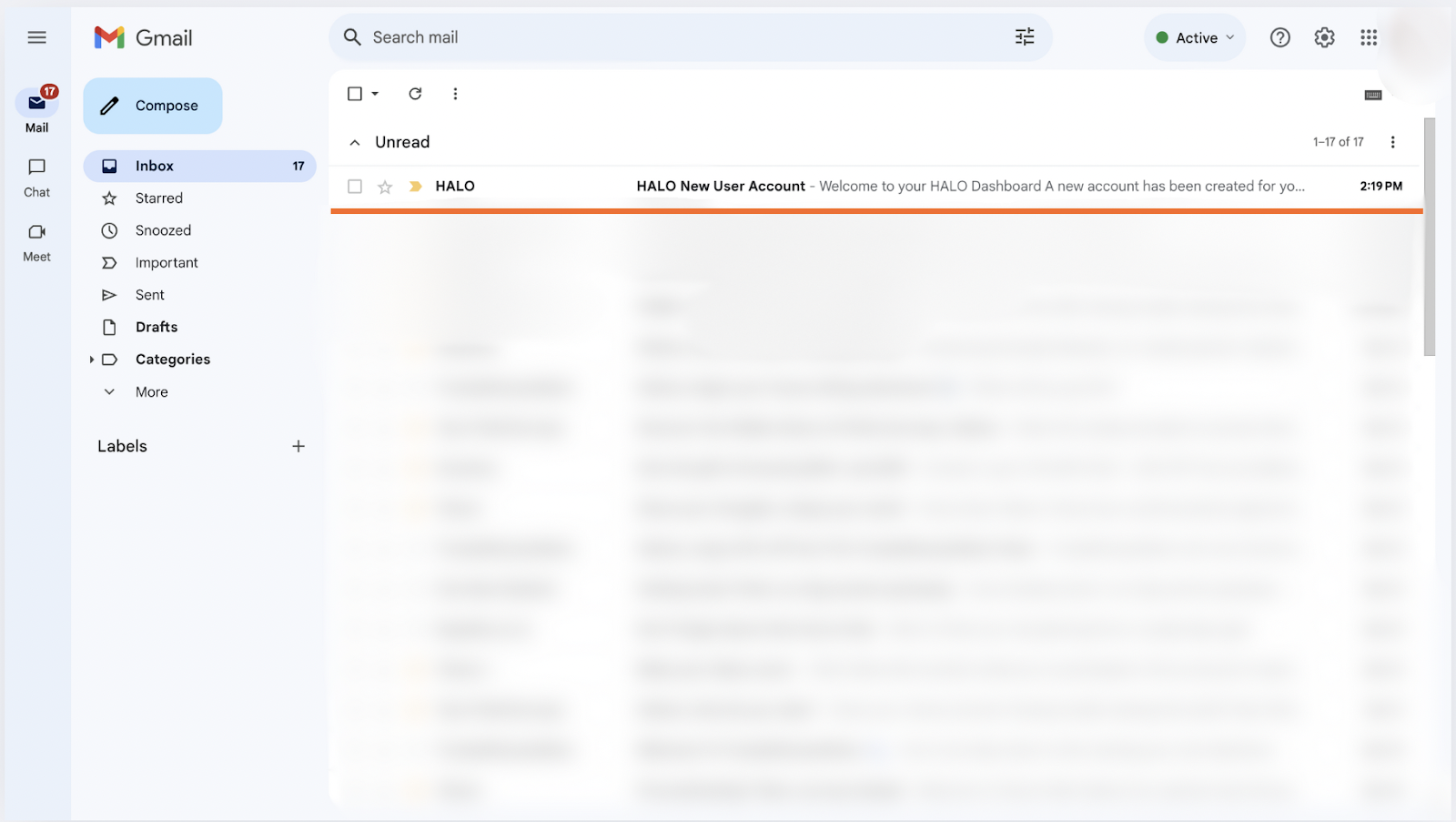
- Open the email and click on the link to create your password.

Note: The password link expires in 24 hours. If it expires, contact Halo Support or use the ‘Forgot Password’ option on the login page.
Entering Password Information
A new page will open with a password creation box. Enter:
- The email address linked to your Halo account
- Your new password
- Confirm your new password
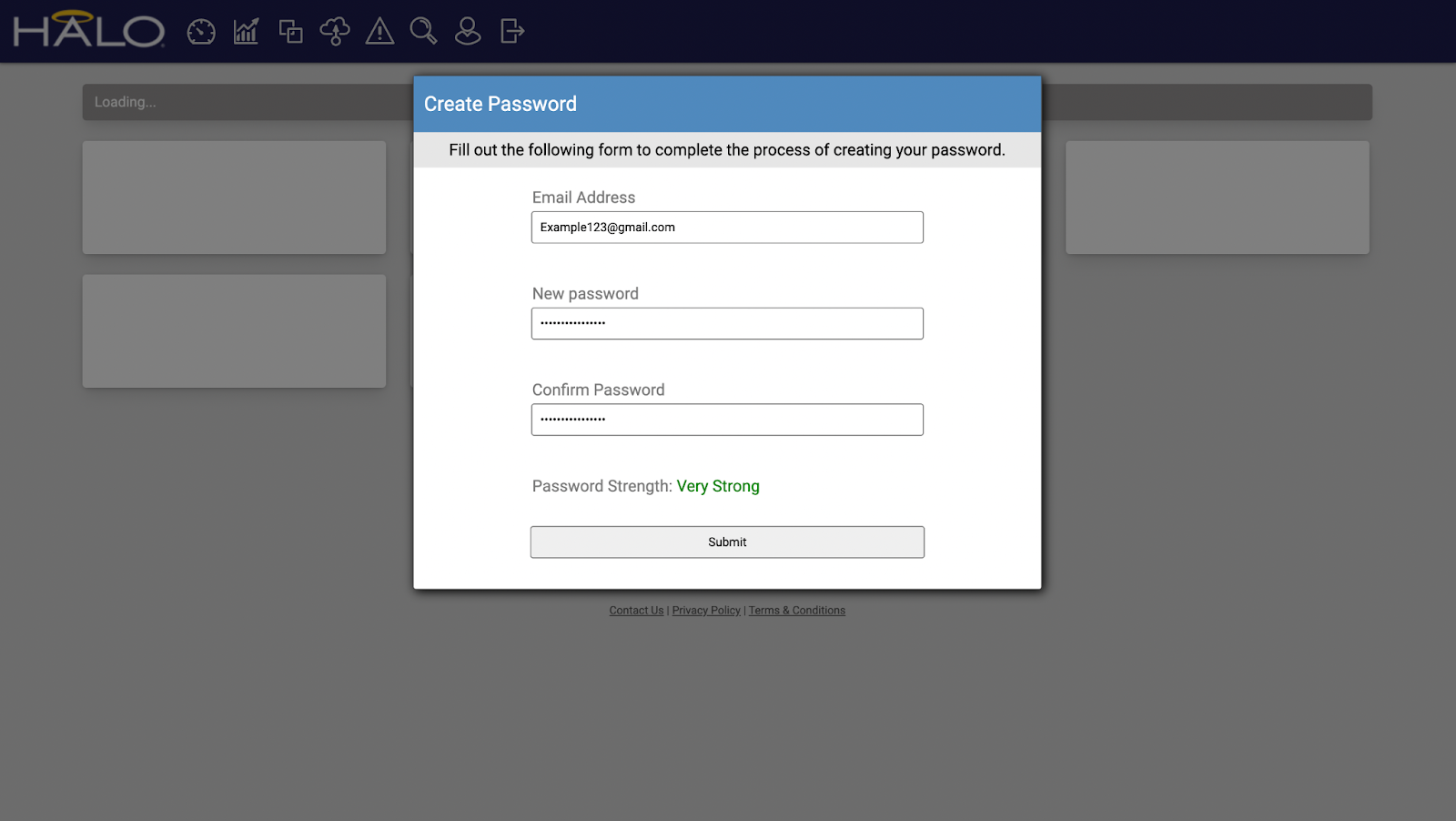
Password Requirements: Minimum 8 characters, including a capital letter and a number. A ‘Password Strength’ indicator will show the strength of your password.
Finalising Setup
- Click Submit to log in to your Halo account
Access the Halo Dashboard
To access the Halo Dashboard after your first login or from a new device, simply navigate to halo.dashboard.co.nz in your web browser.
This should take you to the login page.
- Fill in your login details:
- Username: [Enter your email address]
- Password: [Enter your password]
- Click Login
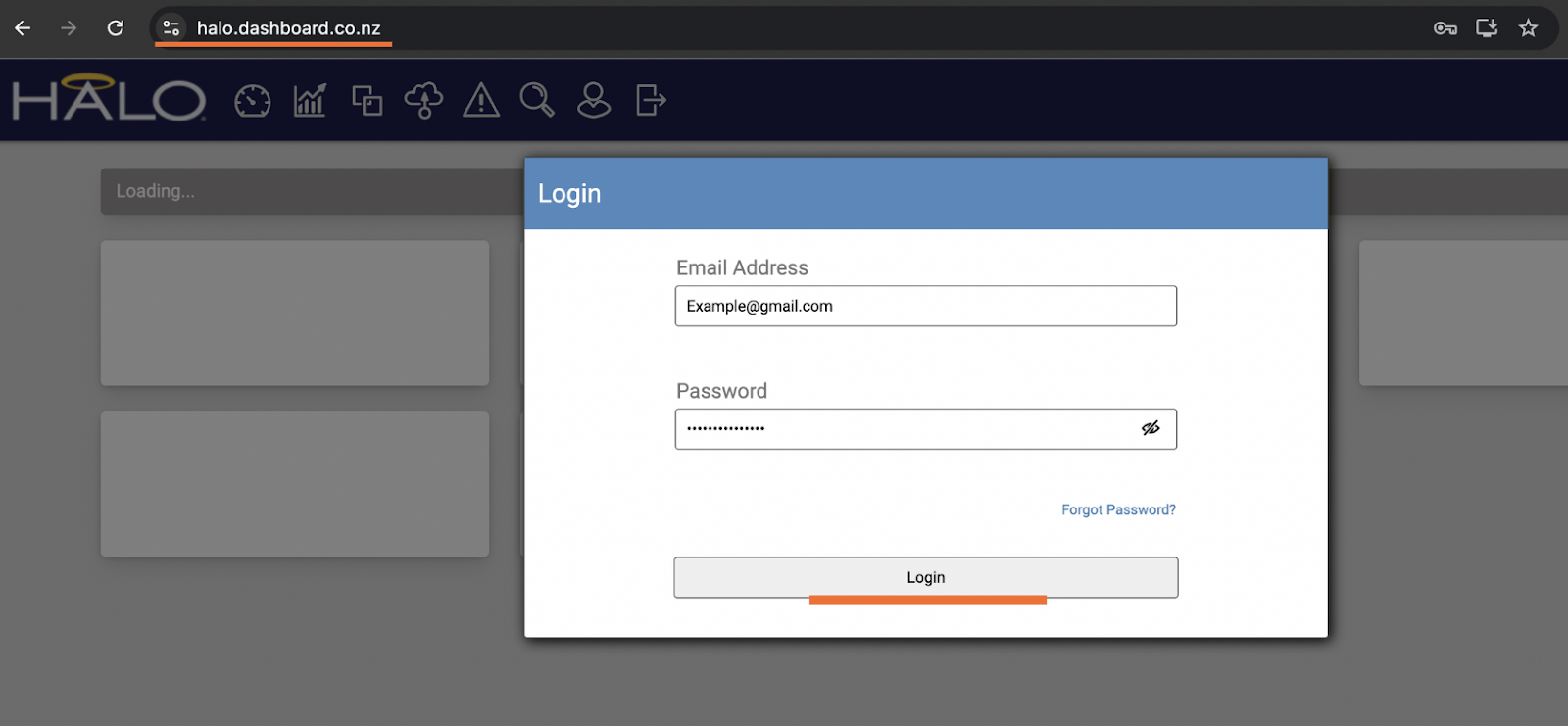
Once you've successfully logged into your dashboard:
- For computer users, we recommend bookmarking the page
- For mobile users, consider adding a shortcut to your home screen
Add Halo to your Home Screen
You can download the Halo Dashboard as a shortcut to your phone home screen. This shortcut looks and functions very similar to an app.
What is the Halo Dashboard?
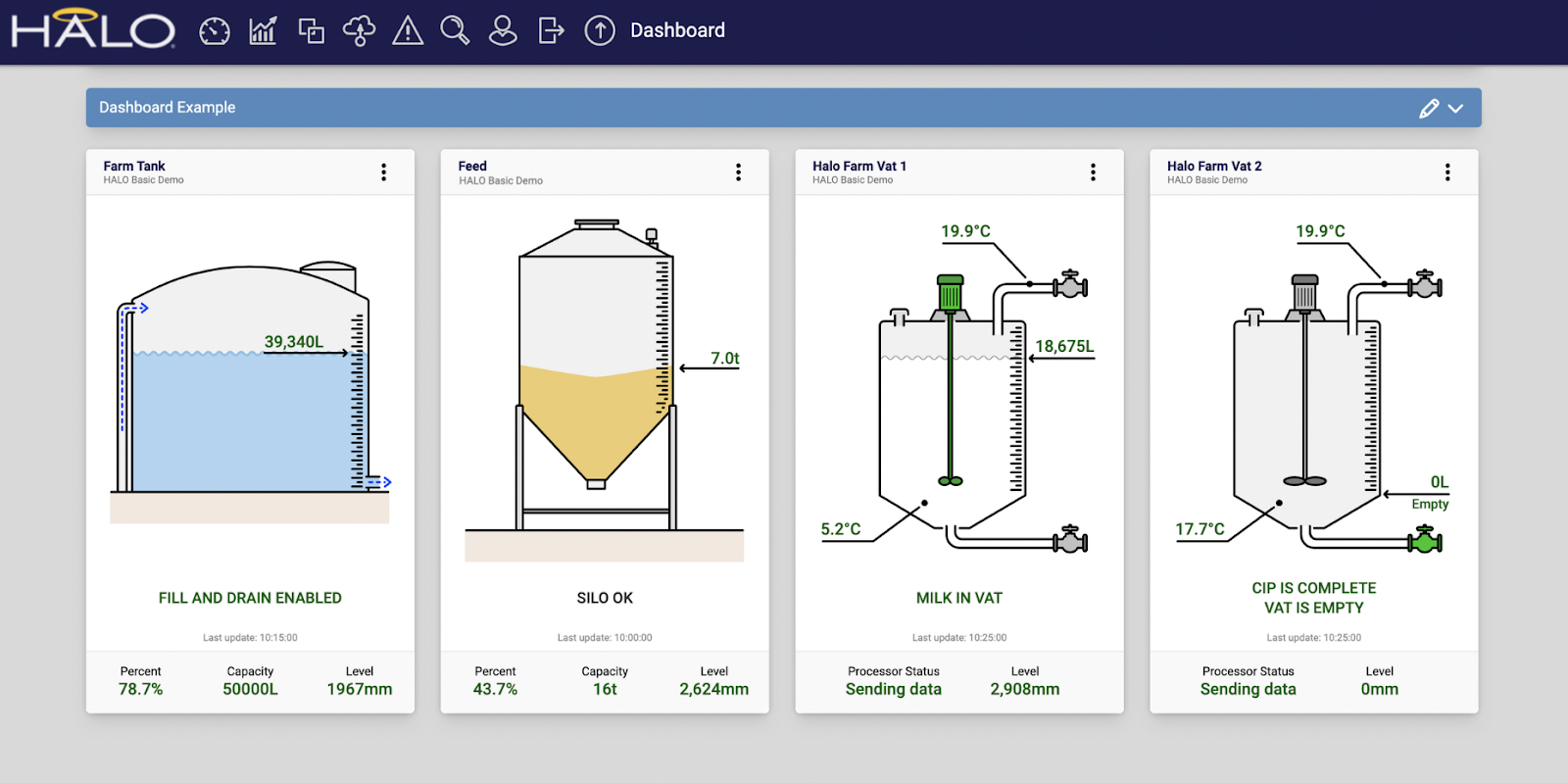
The Halo Dashboard is a web interface that gives you access to the information and data from your Halo system. The Halo Dashboard is how you view, control, and configure the Halo hardware installed on your site.
The layout of the Halo User Dashboard can be customised to suit you, grouping information by equipment type, location, or criticality. Information relating to sensors and equipment is displayed on ‘modules’ and can be grouped within ‘Dashboard sections’, which can be shown or hidden with a click or a tap.
Parts of the Halo Dashboard
The Menu Bar

Displayed at the top of every page on the Halo Dashboard, the menu bar allows quick access to common pages, including the User Dashboard, and fast navigation back to the previous page in the page hierarchy.
The menu bar has the following buttons:
- Dashboard - Go to your User Dashboard.
- Charts - Go to your Charts page, where you can access any custom ‘Chart Reports’ you’ve created or that have been created for you by Halo.
- Groups - View a list of all the groups you can access within the Halo Dashboard.
- Networks - View a list of all the networks you can access within the Halo Dashboard.
- Escalation - View a list of all the escalation lists you have access to within the Halo Dashboard.
- Search - Search for any groups, networks, modules, and other information you can access within the Halo Dashboard.
- Profile - Go to your Halo user profile page.
- Logout - Log out of the Halo Dashboard.
- Back - Go to the previous page in the Halo Dashboard hierarchy. Use your browser’s back button if you’re instead trying to visit the previous page you were on.
- Previous Page - The page back one level in the page hierarchy.
- Current Page - The name of the page you are currently viewing.
Dashboard Modules
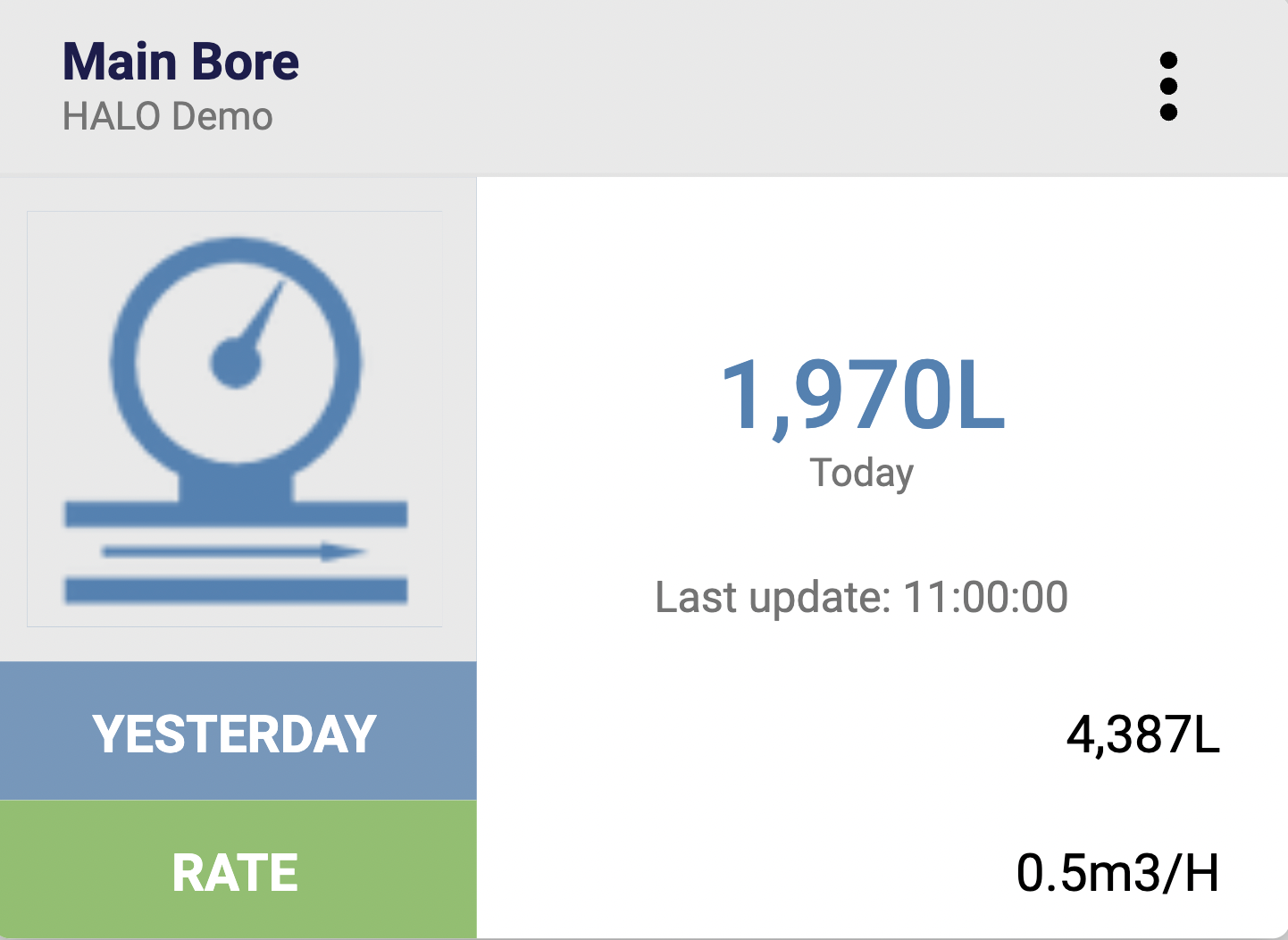
A module is a logical grouping of information relating to a single sensor or component (e.g. a flowmeter) or group of similar sensors and components (e.g. a set of pumps). In the Halo Dashboard, modules don’t always correspond to a single sensor or piece of hardware, such as an Effluent Control module including data from pumps, stirrers, level transmitters, irrigators, valves/solenoids etc.
Parts of a User Dashboard
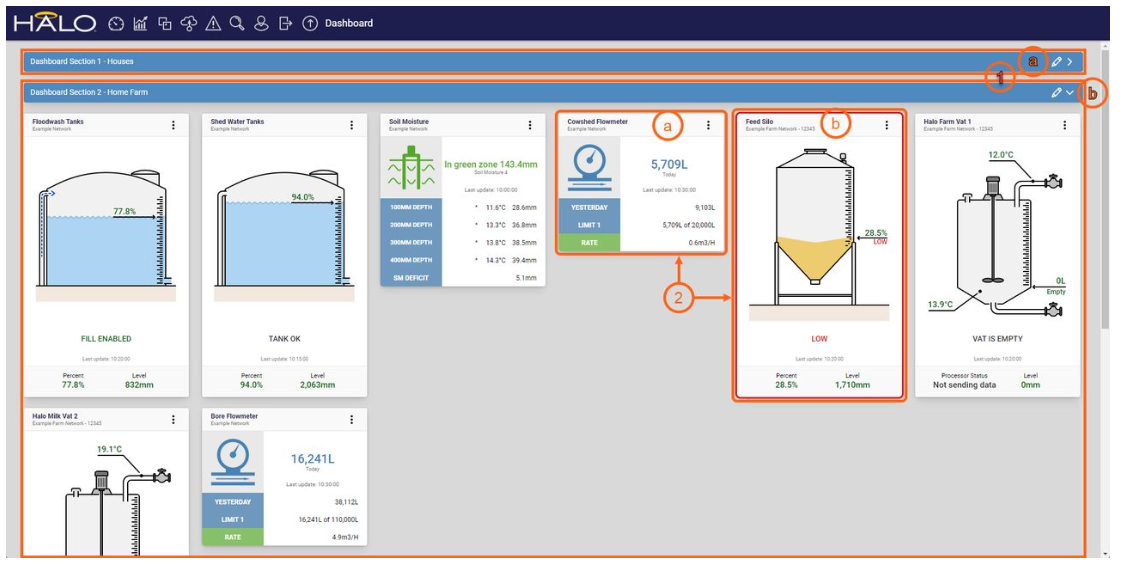
- Dashboard Sections: Each blue bar represents a ‘Dashboard section’. Dashboard sections allow the grouping of modules, which can be temporarily hidden or displayed as required. When hidden, only the section’s name is displayed.
a. Edit Section—The pencil icon to the right of the Dashboard section name lets you edit the section details and add, remove, reorder, or adjust the modules displayed in the Dashboard section.
b. Show/Hide Section—The small arrow to the right of the pencil hides the section (displays it as a blue bar) or shows it (displays the contained modules). In the image above:
- The section named ‘Dashboard Section 1 - Houses’ has been hidden.
- The section named ‘Dashboard Section 2 - Home Farm’ is displayed.
- Dashboard Modules: Each Dashboard section contains one or more Dashboard modules, which display information about your Halo-connected equipment. There are two types of Dashboard modules displayed on the User Dashboard:
a. Dashboard Module (Standard Tile)—A tile showing static information relating to a module.
b. Dashboard Module (Infographic Tile)—A tile with a dynamic pictorial representation of the equipment (e.g. showing quantity within a tank or flow of liquid through a pipe).
View Alerts You’ve Received
If you’ve received an alert from Halo, you may want more information on what caused the alert. To find information about the alert or about any other alerts you’ve received:
- Click or tap the Profile button at the top of the Halo Dashboard

- In the Subscriptions field, click or tap the Events button

- A new page will display a Module Events Notifications table with each line in the table corresponding to an alert sent to you
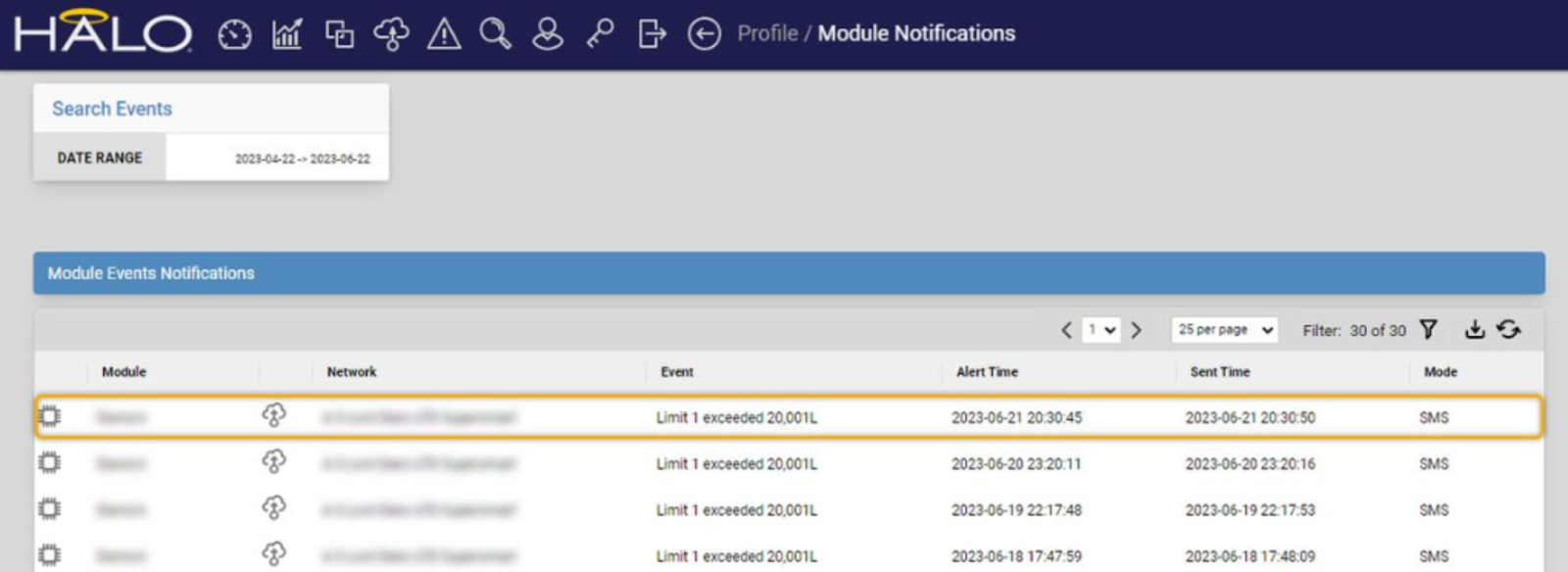
Module: The part of the system that generated the alert E.g. Flowmeter, or Pump Controller
Network: The network where the alert originated - only applicable to customers with multiple sites E.g. Farm 1, Farm 2
Event: The cause of the alert E.g. Limit exceeded 20,001L
Alert Time: The time the alert was generated
Sent Time: The time the alert was confirmed as sent by Halo
Mode: The method of alerting i.e. Email or SMS (text message)
Dashboard Charts
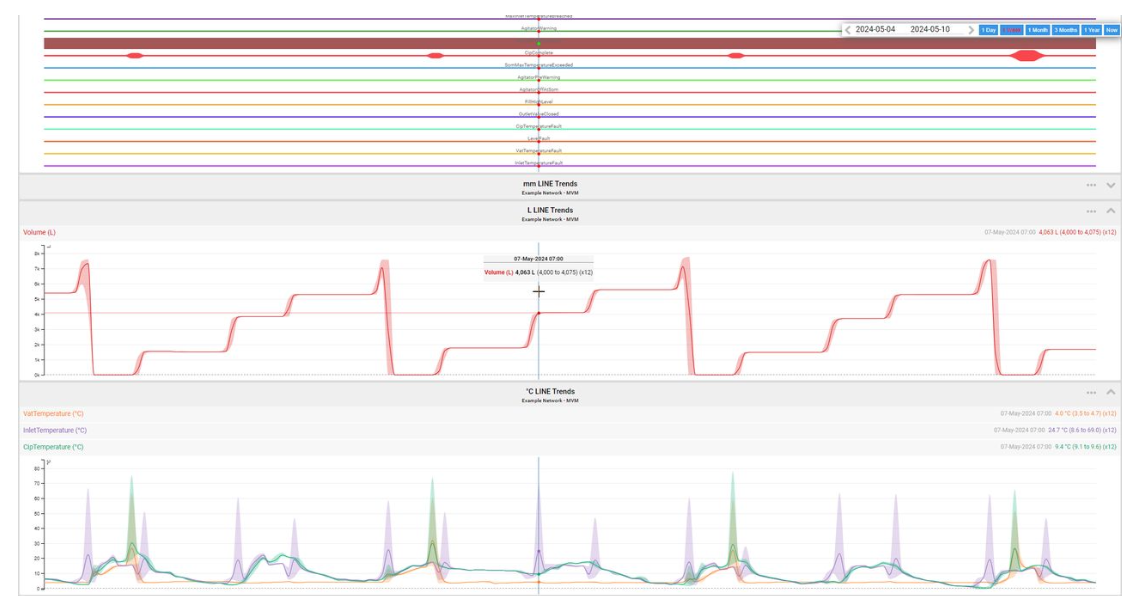
Dashboard Charts are powerful tools that enable you to visualise large datasets, identify trends, and even spot differences or outliers in data over extended periods. On the Halo Dashboard, you can use pre-built charts or build your own to work best for you. These charts give you power over your data, elevating it from simple monitoring and alerting to helping you diagnose irregular faults, spot patterns, and identify changes from day to day, season to season.
Access Charts
You’ll need to first identify what module the data relates to. For instance, milk vat temperature will be on the Milk Vat module, water flow volume will be on the applicable Flowmeter module, and pump running data will be on the Pump module.
You’ll need to identify what module the data relates to. For instance, milk vat temperature will be on the Milk Vat module, water flow volume will be on the applicable Flowmeter module, and pump running data will be on the Pump module.
- Find the appropriate module on your User Dashboard. For this example, we’ll use a Milk Vat module.
- At the top-right corner of the module, select the three vertical dots.
- Depending on the module, there may be one or two options here:
- Most modules have a default set of charts displaying information from every sensor and data point.
To view this chart, select ‘View dynamic chart’. - Some modules have an optimised set of charts, which may be more useful to customers.
To view this chart, select the top button in the list. The text on this button will change depending on the module type.
In our Milk Vat example, this button reads ‘Volume, temperature and alerts chart’.
- Most modules have a default set of charts displaying information from every sensor and data point.

- A new page will open, showing charted data for the applicable module.
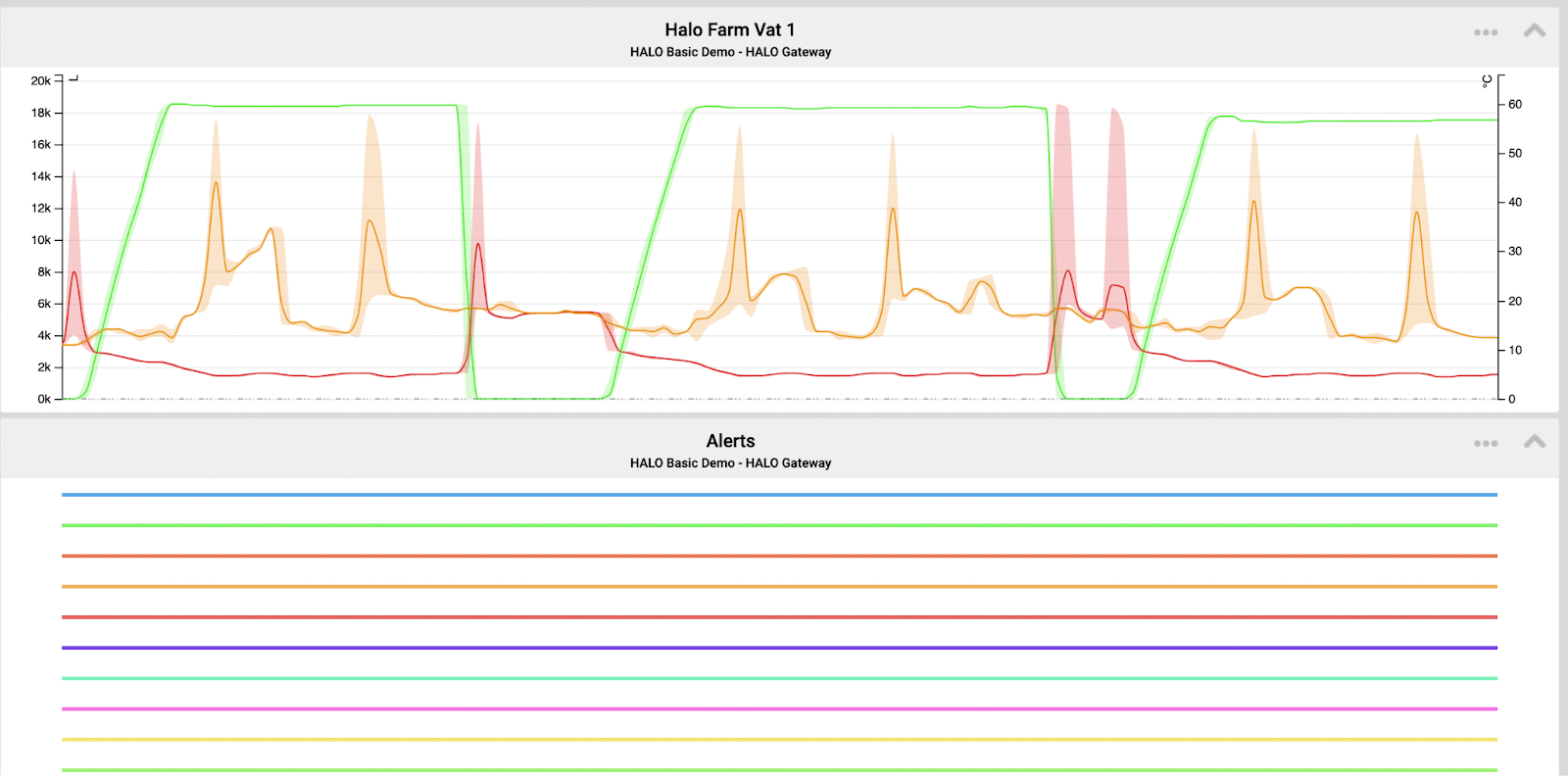
5. Hover your mouse or tap on specific points in the Dashboard to see values, dates, and times for that data.
6. To zoom in on a specific area, click and drag your mouse on a desktop over the section you want to focus on. Use the date picker bar on a mobile phone.
Looking For Data From a Specific Date and Time?

Adjust the time scale:
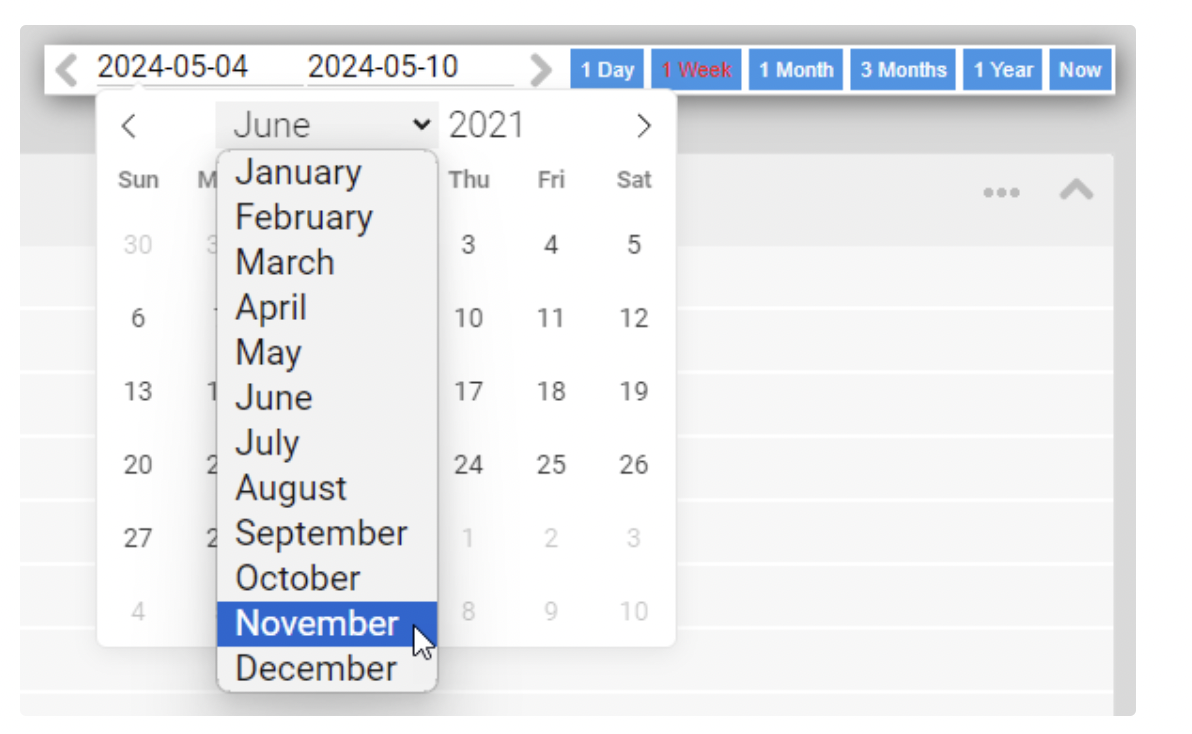
- Date picker preset buttons—Select a preset range, such as 1 day, 1 month, or 1 year.
- Date picker custom range—Enter a custom date range or select it from the pop-up calendar.
Look backward/forward at data over time:
- On a mobile device - Swipe to the right to view historical data.
- Computer or mobile device -Use the arrows on either side of the date picker.
See exact sensor values:
- On a computer - Hover the mouse over the desired point on the chart.
- On a mobile device - Tap a point on the chart.
Contact Halo Systems
If you’re new to Halo Systems and want a quick overview of what it’s all about, give our Frequently Asked Questions page.
If you don’t already have login details to the Halo Dashboard, please see the 'Get Your Halo Login Setup' section at the top of this guide for how we can get you connected.
Systems Support
Phone: 0800 HALOSYS [or 0800 425 679]
Support Page: https://www.halosystems.co.nz/support
Sales Enquiries
Phone: 0800 HALOSYS [or 0800 425 679]
Sales Page: https://www.halosystems.co.nz/enquiry
Other Enquiries
Phone: 0800 HALOSYS [or 0800 425 679]
General Enquires Page: https://www.halosystems.co.nz/company/contact
Website